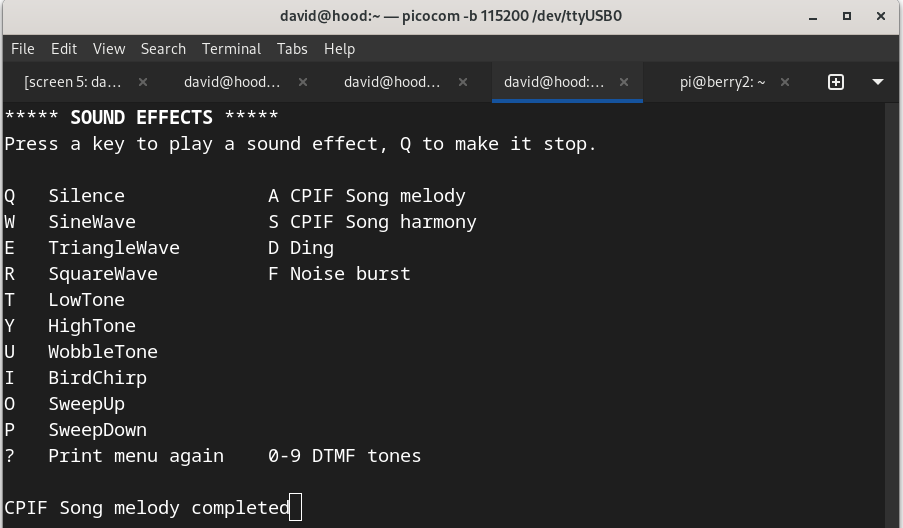Programming
I wrote the code for the MusicBox project in my favorite programming language: Rust!
Writing programs for microcontrollers is often called embedded development because microcontroller chips are embedded in other devices such as microwave ovens, watches, clocks, refrigerators, automobiles, airplanes, tractors, drones, and just about any other machine made in the past 20 years.
See: Embedded development with Rust
The MusicBox project uses the RP2040 microcontroller chip in the Raspberry Pi Pico board.
Software I wrote for MusicBox
Sequence diagram showing driver initialization and startup
sequenceDiagram
pico-rtic-sound-effects->>sonic_ng: init_pacer
pico-rtic-sound-effects->>sonic_ng: init_driver_t4_voice1
create participant T4AudioDriver
sonic_ng ->> T4AudioDriver: new
sonic_ng -->> pico-rtic-sound-effects: T4SonicVoice
pico-rtic-sound-effects->>sonic_ng: start
activate T4AudioDriver
wavegen16 is a Rust module I wrote to efficiently generate audio samples with different waveforms (square, triangle, sine). It takes the sample rate as a generic compile-time parameter and produces 16-bit signed amplitude values.
sonic_ng is a Rust module I wrote to take 16-bit signed audio samples and turn them into PWM driving signals that control my custom A/D converter and audio amplifier.
pico-rtic-sound-effects
is a program I wrote to showcase the abilities of my MusicBox device. It builds
on my wavegen16 and sonic_ng modules. Connect it to a terminal program
running on a PC and press keys, and it makes sounds!

Here is a 25-second recording of my sound effects demo in action: sound effects demo
Credits
Open-source software libraries I used for my MusicBox project: